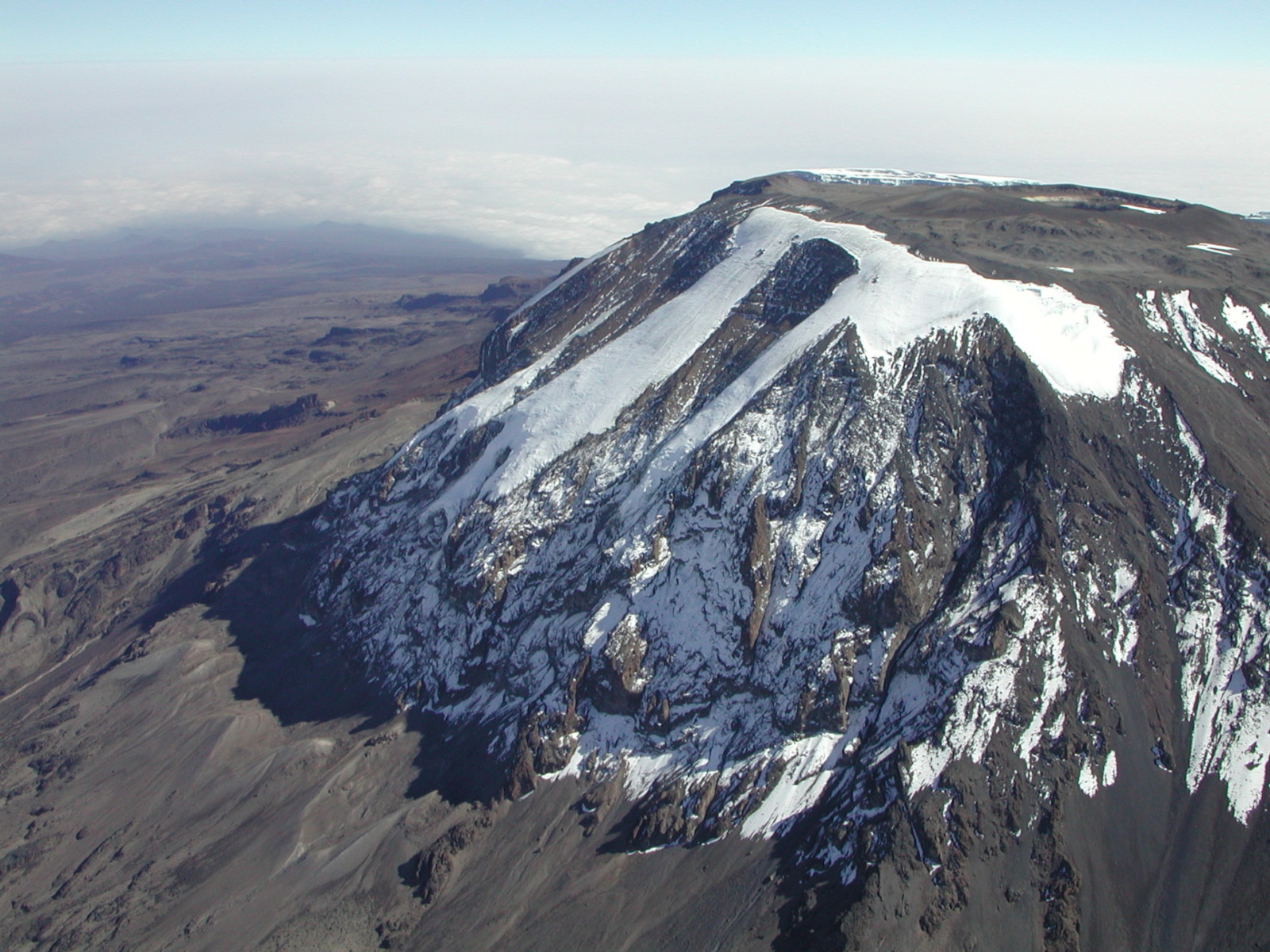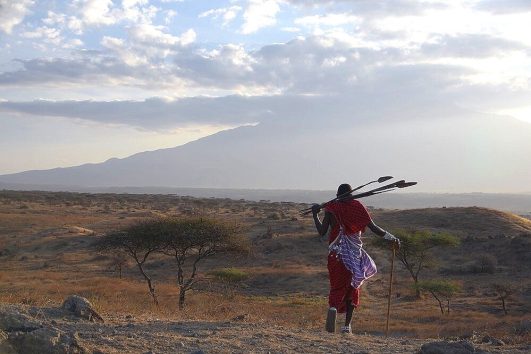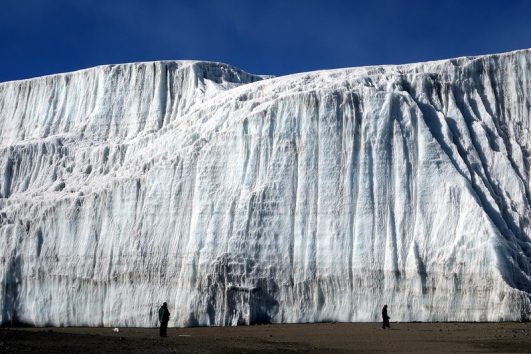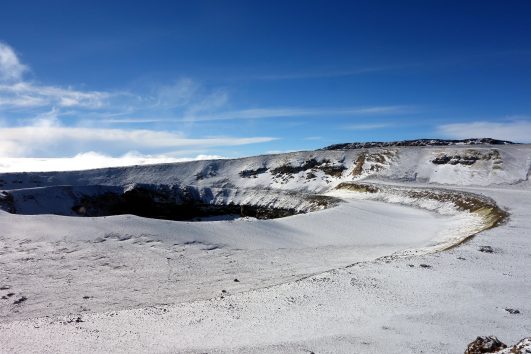Balleto Glacier Elevation / Altitude: 5,400 meters
Balletto Glacier can be found close to the peak of Mount Kilimanjaro in Tanzania, on the southwestern slope of Kibo Peak. Just like the other remaining glaciers on the mountain, it is a small fragment of an icecap that once existed on the summit of Mount Kilimanjaro. The Balletto glacier is located at a high altitude of between 5,400 and 5,000 meters (17,700 and 16,400 ft). Balletto Glacier sits on the much dreaded and gigantic 1,200-metre (3,900 ft) rock wall known as the “Western Breach Wall” otherwise known as the kissing rock just beneath the Diamond Glacier whereby a huge icicle that hangs down the face of the rock face at 90m or 300 ft interconnects the two glaciers.
Location of the Balletto Glacier
Balletto Glacier is located south of the crater on Mount Kilimanjaro and is part of the larger Southern Icefield.
Local legend has it that the Italian Balletto used his dog to discover and map the Machame Route. Balletto is claimed to have tossed a piece of meat for his dog to find when attempting to navigate challenging barriers in the rainforest, and the dog discovered the quickest path to it. Balletto then planned his itinerary by observing his dog’s path.
Probably a myth, but a charming tale nevertheless. We do know that as a token of appreciation for creating this incredibly successful route, the Park named a sizable glacier immediately to the east of the Diamond Glacier after Balletto. It is also a highly effective route.
History of the Balletto Glacier & the Diamond Glacier of Kilimanjaro
Both glaciers were not given distinct designations when Klute mapped the Breach Wall region in 1920 because there had not yet been a break away from the southern ice sheet. The existence of an ice field (the Balletto glacier) under the Diamond glacier’s headwall, however, cannot be disputed. Reinhold Messner, who climbed the first (and only) direct ascent of Kilimanjaro’s Breach Wall in 1978, not only noted the existence of this ice field in the satellite record but also recorded it in 1991.
The northern and eastern ice fields, as well as the Great Penck glacier from the northern ice field, became separated from one another as a result of the rapid melting of the Uhlig glacier, the splitting of the Diamond and Balletto glaciers from the southern ice field, and the persistent retreat of ice. The Little Penck proved more resilient than the Great Penck and didn’t detach from the northern ice field until around 1992, whereas the Great Penck’s remnant vanished entirely at this time. After 2003, the Furtwangler glacier also started to break up into smaller ice chunks. The top section of the Kersten glacier separated from its lower reaches between 2003 and 2011, which was partially predicted, showing that the southern ice sheet has not spared the ongoing decline.
Additional information
| Routes | Machame Route |
|---|---|
| Vegetation | Arctic Zone |





Tour Reviews
There are no reviews yet.
Leave a Review